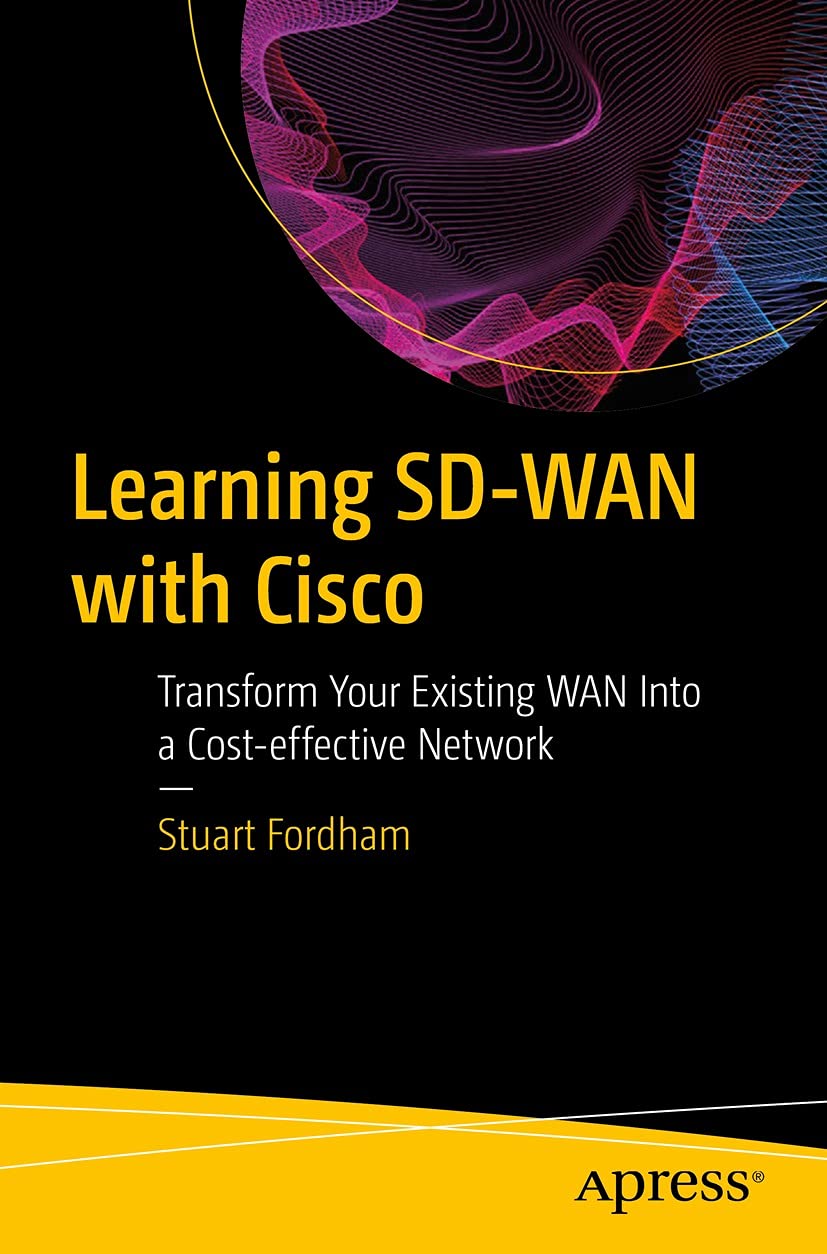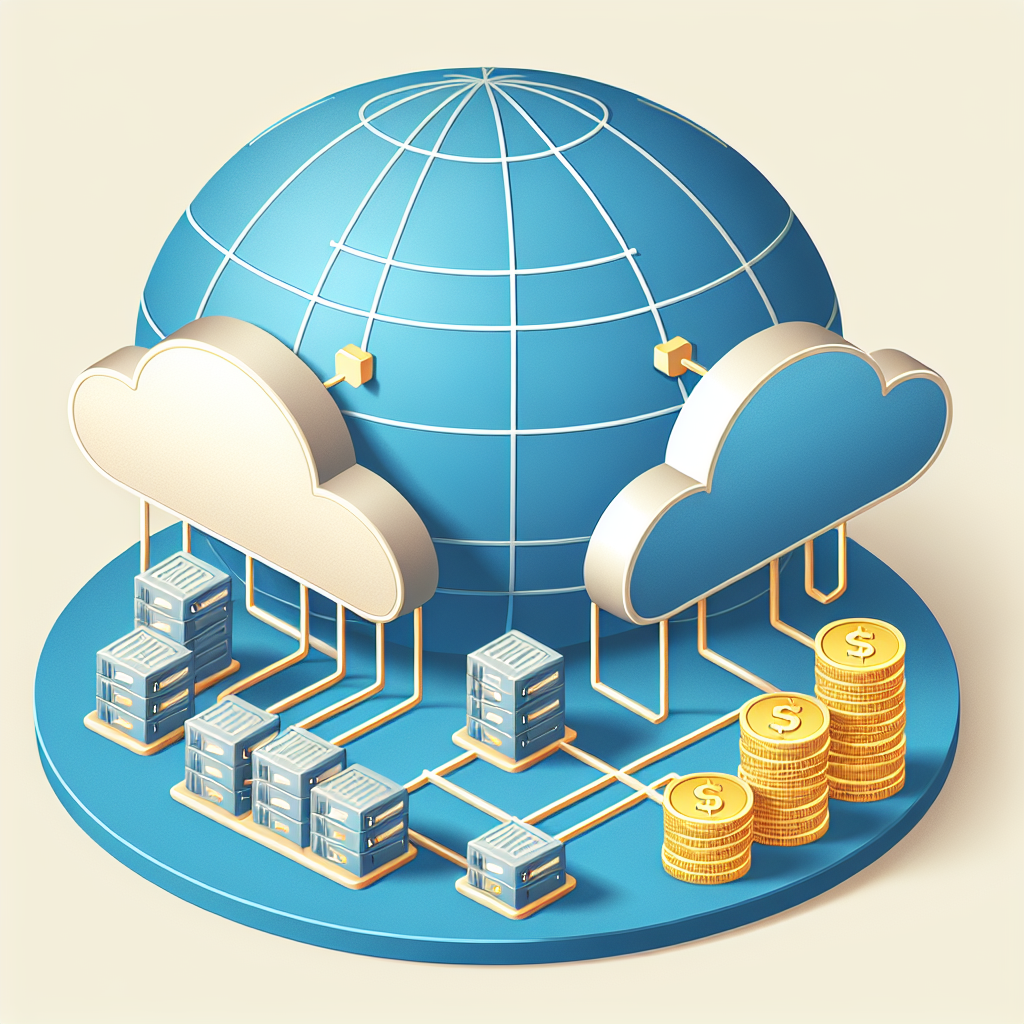Your cart is currently empty!
Tag: CostEffective

The Cost-Effective Solution: How Managed Service Providers Save Businesses Money
In today’s fast-paced and highly competitive business environment, companies are constantly looking for ways to reduce costs and increase efficiency. One cost-effective solution that has gained popularity in recent years is the use of managed service providers (MSPs).Managed service providers are third-party companies that offer a range of IT services to businesses, such as network monitoring, data backup, and security management. By outsourcing these services to an MSP, businesses can save money on hiring and training in-house IT staff, as well as on purchasing and maintaining expensive hardware and software.
One of the key ways that managed service providers save businesses money is through their expertise and efficiency. MSPs have a team of highly skilled IT professionals who are trained to handle a wide range of technical issues and challenges. This means that businesses can rely on the expertise of the MSP to quickly resolve any IT problems that may arise, without having to invest in additional training or resources.
In addition, managed service providers often offer flexible pricing models that allow businesses to pay only for the services they need, when they need them. This pay-as-you-go model can help companies save money by avoiding the upfront costs associated with purchasing and maintaining IT infrastructure.
Another way that managed service providers save businesses money is by helping to prevent costly downtime. MSPs monitor and maintain a company’s IT systems around the clock, ensuring that any potential issues are addressed before they can cause major disruptions to the business. This proactive approach to IT management can help businesses avoid costly downtime and lost productivity, ultimately saving them money in the long run.
Furthermore, by outsourcing their IT services to a managed service provider, businesses can free up their internal IT staff to focus on more strategic initiatives that can drive growth and innovation. This can lead to increased productivity and efficiency within the organization, ultimately saving businesses money by maximizing the value of their IT resources.
Overall, managed service providers offer a cost-effective solution for businesses looking to streamline their IT operations and reduce costs. By outsourcing their IT services to an MSP, companies can benefit from the expertise and efficiency of a team of IT professionals, flexible pricing models, and proactive IT management that can help prevent costly downtime. In today’s competitive business landscape, utilizing a managed service provider can be a smart investment that can help businesses save money and stay ahead of the competition.

Learning SD-WAN with Cisco: Transform Your Existing WAN Into a Cost-effective Network
Price: $52.79
(as of Dec 22,2024 23:08:34 UTC – Details)
ASIN : B09FG74GM2
Publisher : Apress (September 3, 2021)
Publication date : September 3, 2021
Language : English
File size : 25868 KB
Text-to-Speech : Enabled
Screen Reader : Supported
Enhanced typesetting : Enabled
X-Ray : Not Enabled
Word Wise : Not Enabled
Print length : 470 pages
In today’s rapidly evolving technological landscape, businesses are constantly looking for ways to improve their network infrastructure in order to keep up with the demands of a digital world. One solution that has gained significant traction in recent years is Software-Defined Wide Area Networking (SD-WAN).SD-WAN offers a more flexible and cost-effective alternative to traditional WAN solutions, allowing businesses to optimize their network performance, improve security, and reduce operational costs. And when it comes to learning how to implement and manage SD-WAN, Cisco is a trusted leader in the field.
With Cisco’s comprehensive training programs, businesses can transform their existing WAN into a more efficient and reliable network. From understanding the basics of SD-WAN technology to hands-on experience with Cisco’s industry-leading networking equipment, Cisco’s training courses cover everything you need to know to successfully deploy and manage an SD-WAN solution.
Whether you’re a network administrator looking to upgrade your skills or a business owner seeking to enhance your network infrastructure, learning SD-WAN with Cisco can help you stay ahead of the curve and drive your business forward. Don’t miss out on the opportunity to transform your existing WAN into a cost-effective network with Cisco’s cutting-edge SD-WAN solutions.
#Learning #SDWAN #Cisco #Transform #Existing #WAN #Costeffective #Network, Cisco Software
Remote Monitoring: A Cost-Effective Solution for Businesses
In today’s fast-paced business environment, staying ahead of the competition requires companies to continuously monitor their operations to ensure efficiency and productivity. This is where remote monitoring comes into play, offering businesses a cost-effective solution to keep an eye on their assets and operations from anywhere in the world.Remote monitoring involves the use of sensors, cameras, and other technology to track and analyze data in real-time. This data can include information on equipment performance, energy usage, temperature, and more. By collecting and analyzing this data remotely, businesses can identify potential issues and make informed decisions to optimize their operations.
One of the main advantages of remote monitoring is its cost-effectiveness. By using technology to monitor operations remotely, businesses can reduce the need for on-site personnel, saving on labor costs. Additionally, remote monitoring can help companies prevent costly equipment failures and downtime by detecting issues early on, ultimately saving money in repairs and lost revenue.
Another benefit of remote monitoring is its convenience and flexibility. With remote access to data, businesses can keep an eye on their operations 24/7, from anywhere in the world. This allows for faster decision-making and response times, ultimately improving overall efficiency and productivity.
Furthermore, remote monitoring can also help businesses improve sustainability and reduce their environmental impact. By monitoring energy usage and other resources remotely, companies can identify areas where they can reduce waste and improve efficiency, ultimately leading to cost savings and a smaller carbon footprint.
Overall, remote monitoring offers businesses a cost-effective solution to stay on top of their operations and make informed decisions in real-time. By leveraging technology to monitor assets remotely, companies can improve efficiency, reduce costs, and stay ahead of the competition in today’s fast-paced business world.

The Cost-Effective Solution: How Cloud Storage Can Save Your Business Money
In today’s digital age, data storage has become a crucial aspect of running a successful business. With the amount of information being generated and stored on a daily basis, organizations are constantly looking for cost-effective solutions to manage their data effectively. One such solution that has gained popularity in recent years is cloud storage.Cloud storage refers to the storage of data on remote servers that can be accessed and managed over the internet. This eliminates the need for physical storage devices such as hard drives or servers, saving businesses the cost of purchasing and maintaining these devices. Additionally, cloud storage providers typically offer flexible pricing plans based on the amount of storage space required, allowing businesses to scale up or down as needed without incurring additional costs.
One of the primary ways in which cloud storage can save businesses money is through reduced IT infrastructure costs. By storing data in the cloud, businesses can avoid the need to invest in expensive hardware and software, as well as the associated maintenance and upgrade costs. This can result in significant cost savings for businesses of all sizes, particularly smaller organizations with limited IT budgets.
Furthermore, cloud storage can also help businesses save money on energy costs. Traditional data centers require large amounts of energy to power and cool servers, leading to high electricity bills. By outsourcing data storage to the cloud, businesses can reduce their energy consumption and lower their carbon footprint, while also saving money on utility bills.
Another cost-saving benefit of cloud storage is the ability to access data from anywhere, at any time. This can help businesses reduce travel expenses and improve productivity, as employees can work remotely and collaborate on projects in real-time. Additionally, cloud storage providers often offer backup and disaster recovery services as part of their packages, eliminating the need for businesses to invest in separate backup solutions.
In conclusion, cloud storage offers numerous cost-effective benefits for businesses looking to streamline their data storage processes. From reducing IT infrastructure costs to saving on energy expenses and improving productivity, cloud storage can provide a cost-effective solution for businesses of all sizes. By leveraging the power of the cloud, businesses can not only save money but also improve their data management practices and stay ahead of the competition in today’s fast-paced digital world.

Cloud Computing: Cost-effective Solutions for IT Infrastructure
Cloud computing has revolutionized the way businesses manage their IT infrastructure by providing cost-effective solutions that are scalable, flexible, and reliable. With the increasing demand for digital transformation and data storage, many companies are turning to cloud computing to streamline their operations and reduce costs.One of the key benefits of cloud computing is its cost-effectiveness. Traditional IT infrastructure requires significant upfront investment in hardware, software, and maintenance. With cloud computing, businesses can leverage the resources of a third-party provider, paying only for the services they use on a pay-as-you-go basis. This eliminates the need for expensive hardware upgrades and reduces operational costs.
Moreover, cloud computing offers scalability and flexibility, allowing businesses to easily scale up or down their resources based on their needs. This is especially beneficial for businesses with fluctuating workloads or seasonal demands. With cloud computing, businesses can quickly deploy new servers, storage, and applications without the need for additional hardware.
Additionally, cloud computing provides a high level of reliability and security. Cloud providers invest heavily in data centers and infrastructure to ensure uptime and data protection. This allows businesses to focus on their core operations without worrying about system failures or data breaches.
Furthermore, cloud computing offers improved collaboration and accessibility. Employees can access their data and applications from anywhere with an internet connection, enabling remote work and increasing productivity. Cloud-based applications also facilitate real-time collaboration among team members, leading to faster decision-making and innovation.
In conclusion, cloud computing offers cost-effective solutions for IT infrastructure that can benefit businesses of all sizes. By leveraging the scalability, flexibility, reliability, and security of cloud computing, businesses can streamline their operations, reduce costs, and focus on their core competencies. As the demand for digital transformation continues to grow, cloud computing will play a crucial role in driving business success in the digital age.

Predictive Maintenance: A Cost-Effective Solution for Data Center Efficiency
In today’s fast-paced digital world, data centers play a crucial role in ensuring the smooth operation of businesses and organizations. These facilities house a vast amount of critical data and equipment that are essential for the day-to-day operations of companies. As such, any downtime or disruption in a data center can have significant consequences, including financial losses and damage to reputation.To prevent such disruptions, data center managers are increasingly turning to predictive maintenance as a cost-effective solution for improving efficiency and ensuring the optimal performance of their facilities. Predictive maintenance involves using advanced analytics and monitoring tools to predict when equipment is likely to fail, allowing for timely repairs or replacements before any issues arise.
One of the key benefits of predictive maintenance is its ability to reduce downtime and minimize the risk of unexpected equipment failures. By monitoring the condition of critical components in real-time, data center managers can proactively address potential issues before they escalate, thereby preventing costly downtime and disruptions to operations.
In addition to improving uptime, predictive maintenance can also lead to cost savings for data center operators. By identifying and addressing maintenance issues early on, organizations can avoid the need for costly emergency repairs or replacements, as well as reduce the overall maintenance costs associated with running a data center.
Furthermore, predictive maintenance can also help to extend the lifespan of equipment and optimize its performance. By identifying and addressing potential issues before they become major problems, data center managers can ensure that their equipment is operating at peak efficiency, thereby maximizing its lifespan and reducing the need for frequent replacements.
Overall, predictive maintenance is a cost-effective solution for improving data center efficiency and ensuring the smooth operation of critical infrastructure. By leveraging advanced analytics and monitoring tools, data center managers can proactively address maintenance issues, reduce downtime, and optimize the performance of their facilities, ultimately leading to cost savings and improved operational efficiency.

The Cost-Effective Solution: Why a 2TB NVMe SSD is Worth the Investment
In today’s digital age, storage space is a crucial consideration for many individuals and businesses alike. With the increasing amount of data being generated and stored, having a reliable and fast storage solution is essential. One such solution that has been gaining popularity is the 2TB NVMe SSD.NVMe (Non-Volatile Memory Express) SSDs are a type of solid-state drive that offers lightning-fast speeds and performance compared to traditional hard drives. This makes them ideal for tasks that require quick access to data, such as gaming, video editing, and data analysis.
While NVMe SSDs have been around for some time now, the 2TB capacity option has become more affordable and accessible in recent years. This makes it a cost-effective solution for those who need a large amount of storage space without compromising on speed and performance.
One of the main reasons why a 2TB NVMe SSD is worth the investment is its speed. These drives can read and write data at speeds of up to 3,500 MB/s, which is significantly faster than traditional hard drives. This means that tasks such as loading large files, booting up the operating system, and launching applications will be much quicker and more efficient.
Additionally, the 2TB capacity of NVMe SSDs allows for ample storage space for all your files, applications, and games. This means you won’t have to worry about running out of space or constantly having to delete files to make room for new ones.
Furthermore, NVMe SSDs are more reliable and durable than traditional hard drives, as they have no moving parts that can wear out over time. This means that your data will be safer and more secure, as the chances of data loss due to mechanical failure are greatly reduced.
In conclusion, investing in a 2TB NVMe SSD is a cost-effective solution for those who need a high-performance storage solution with ample capacity. With its lightning-fast speeds, ample storage space, and increased reliability, a 2TB NVMe SSD is definitely worth the investment for individuals and businesses looking to improve their data storage and access capabilities.

Cost-effective Strategies for Data Center Repair and Upgrades
Data centers are the backbone of modern businesses, housing essential hardware and software that keep organizations running smoothly. However, maintaining and upgrading these facilities can be costly, especially as technology continues to evolve rapidly. In order to keep up with the demands of an ever-changing digital landscape, businesses need to implement cost-effective strategies for data center repair and upgrades.One of the most important aspects of maintaining a data center is regular maintenance and repairs. By addressing issues before they escalate, businesses can prevent costly downtime and ensure that their data center is running at optimal performance. To minimize repair costs, businesses should consider implementing a proactive maintenance schedule, conducting regular inspections, and investing in high-quality equipment that is less likely to break down.
When it comes to upgrading a data center, businesses should prioritize investments that will have the greatest impact on performance and efficiency. This may include upgrading hardware such as servers, storage devices, and networking equipment, as well as implementing software solutions that can improve data processing and management. By carefully evaluating the needs of the data center and focusing on upgrades that will deliver the most value, businesses can ensure that they are getting the most out of their investment.
Another cost-effective strategy for data center repair and upgrades is to consider outsourcing certain tasks to third-party providers. By partnering with experienced professionals who specialize in data center maintenance and upgrades, businesses can benefit from their expertise and access to the latest technology without having to invest in expensive equipment or training. Outsourcing can also help businesses save time and resources, allowing them to focus on their core business activities.
In addition to outsourcing, businesses can also explore alternative financing options for data center repairs and upgrades. This may include leasing equipment, financing upgrades through a vendor, or exploring government grants and incentives that can help offset costs. By being creative and resourceful in their approach to funding data center projects, businesses can ensure that they are able to keep up with the latest technology without breaking the bank.
In conclusion, cost-effective strategies for data center repair and upgrades are essential for businesses looking to stay competitive in today’s digital economy. By prioritizing maintenance, investing in high-impact upgrades, outsourcing tasks to third-party providers, and exploring alternative financing options, businesses can ensure that their data center remains efficient, reliable, and secure. With the right approach, businesses can maximize the value of their data center investments and position themselves for long-term success.

Cost-Effective Approaches to Data Center Reactive Maintenance
In today’s fast-paced business environment, data centers play a crucial role in ensuring the smooth operation of organizations. However, maintaining these facilities can be a costly endeavor, especially when it comes to reactive maintenance. Reactive maintenance refers to fixing equipment or systems only when they break down, which can lead to unexpected downtime and costly repairs.To help organizations manage their data center maintenance costs more effectively, here are some cost-effective approaches to data center reactive maintenance:
1. Implement a proactive maintenance strategy: Instead of waiting for equipment to fail, organizations can adopt a proactive maintenance strategy that involves regular inspections, testing, and preventive maintenance tasks. By identifying and addressing potential issues before they escalate, organizations can minimize the likelihood of unexpected downtime and costly repairs.
2. Invest in monitoring and predictive maintenance tools: Monitoring tools can help organizations track the performance of their data center equipment in real-time, allowing them to identify potential issues before they impact operations. Predictive maintenance tools use data analytics and machine learning algorithms to predict when equipment is likely to fail, enabling organizations to schedule maintenance activities proactively.
3. Prioritize critical equipment: Not all data center equipment is equally important to the organization’s operations. By prioritizing critical equipment, organizations can focus their reactive maintenance efforts on the most essential assets, reducing overall maintenance costs.
4. Partner with reliable vendors: Working with reliable vendors and service providers can help organizations minimize downtime and reduce maintenance costs. Vendors with a strong track record of providing timely and quality service can help organizations address maintenance issues quickly and effectively.
5. Train and empower employees: Investing in training and empowering employees to perform basic maintenance tasks can help organizations reduce their reliance on external service providers. By equipping employees with the skills and knowledge to troubleshoot and address common maintenance issues, organizations can save time and money on reactive maintenance.
6. Regularly review and update maintenance procedures: Data center maintenance procedures should be regularly reviewed and updated to reflect changes in technology, equipment, and best practices. By ensuring that maintenance procedures are up-to-date and aligned with industry standards, organizations can optimize their maintenance efforts and minimize costs.
In conclusion, managing data center reactive maintenance costs effectively requires a combination of proactive strategies, investment in monitoring tools, prioritization of critical equipment, collaboration with reliable vendors, employee training, and regular review of maintenance procedures. By implementing these cost-effective approaches, organizations can ensure the smooth operation of their data centers while minimizing downtime and maintenance costs.

The Economics of Data Center HVAC: Cost-Effective Strategies
Data centers are the backbone of modern businesses, storing and processing vast amounts of data to keep operations running smoothly. However, running a data center comes with a hefty price tag, especially when it comes to cooling the servers to prevent overheating and ensure optimal performance. In fact, HVAC (Heating, Ventilation, and Air Conditioning) systems can account for up to 40% of a data center’s total energy consumption, making it a significant expense for businesses.With the rising demand for data storage and processing capabilities, data center operators are constantly looking for cost-effective strategies to optimize their HVAC systems. By implementing efficient cooling solutions, businesses can not only reduce their energy costs but also improve the overall performance and reliability of their data centers.
One of the key strategies for cost-effective HVAC in data centers is to implement a modular cooling system. Traditional HVAC systems are designed to cool the entire data center, regardless of the actual heat load. This leads to wasted energy and higher operating costs. Modular cooling systems, on the other hand, allow data center operators to cool specific areas or racks that are generating the most heat, resulting in more efficient cooling and lower energy consumption.
Another cost-effective strategy is to implement free cooling techniques, such as using outside air or water instead of traditional refrigeration systems to cool the servers. By taking advantage of natural cooling methods, businesses can significantly reduce their energy costs and minimize their environmental impact.
Furthermore, optimizing airflow within the data center can also help reduce cooling costs. By ensuring proper airflow management and eliminating hot spots, businesses can improve the efficiency of their HVAC systems and prevent unnecessary cooling.
In addition to implementing efficient cooling solutions, businesses can also leverage data analytics and monitoring tools to optimize their HVAC systems. By collecting and analyzing real-time data on temperature, humidity, and airflow, data center operators can identify areas of improvement and make informed decisions to increase efficiency and reduce costs.
Ultimately, the economics of data center HVAC come down to finding the right balance between cost and performance. By implementing cost-effective strategies, businesses can not only reduce their energy expenses but also enhance the overall reliability and efficiency of their data centers. With the increasing demand for data storage and processing capabilities, optimizing HVAC systems will be crucial for businesses to stay competitive in the digital age.
